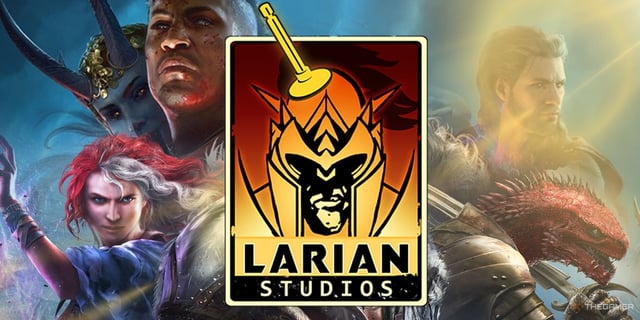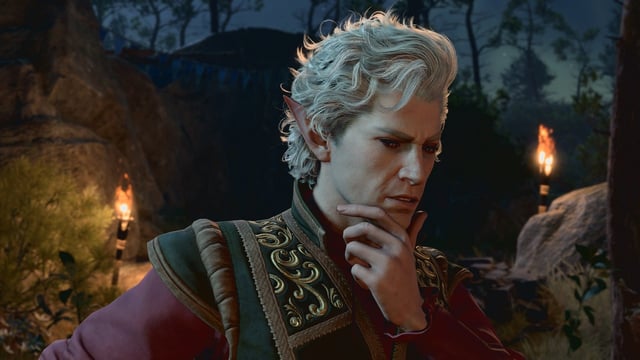No Baldur's Gate 4?

Larian Studios, fresh off the critical and commercial triumph of Baldur's Gate 3, has made a surprising announcement: they won't be developing a sequel. And, perhaps even more shockingly, they might be stepping away from the RPG genre altogether. For a studio that just redefined what a modern RPG can be, this decision begs the question: why? And what does it mean for the future of the genre?
A look at Larian studio members celebrating the launch of Baldur's Gate 3, highlighting the atmosphere of success and teamwork behind the game.
This isn't just a case of "creative differences" with Wizards of the Coast (though those may exist, and we'll get to that). It's a calculated risk, a strategic pivot that speaks volumes about the pressures and possibilities facing AAA game developers today. To understand it, we need to rewind a bit and look at Larian's journey to the top.
Divinity: Original Sin 2: The Forging of a Studio Identity
Before Baldur's Gate 3, there was Divinity: Original Sin 2. A critical darling in its own right, DOS2 was arguably where Larian truly cemented its identity: a studio unafraid to embrace player agency, systemic complexity, and a healthy dose of irreverent humor. They owned that IP. The rules were theirs to make and break. They could experiment, iterate, and truly define their vision.
 A screenshot from Divinity: Original Sin 2, emphasizing the unique visual style and deep RPG mechanics that defined Larian's previous work.
A screenshot from Divinity: Original Sin 2, emphasizing the unique visual style and deep RPG mechanics that defined Larian's previous work.
That creative freedom, the ability to build a world entirely from scratch, is a powerful drug. It fosters innovation, encourages risk-taking, and allows a studio to truly imprint its personality on a game. Divinity was Larian.
Baldur's Gate 3: A Triumph Within Constraints?
Then came Baldur's Gate 3. A chance to work with one of the most iconic IPs in gaming history, Dungeons & Dragons. The opportunity was massive: instant brand recognition, a built-in fanbase, and the backing of Wizards of the Coast. But it also came with constraints.
 An in-game action shot from Baldur's Gate 3, illustrating the game's immersive world and engaging combat system within the Dungeons & Dragons universe.
An in-game action shot from Baldur's Gate 3, illustrating the game's immersive world and engaging combat system within the Dungeons & Dragons universe.
The D&D license, while a boon, also meant adhering to established lore, rulesets, and character archetypes. Larian had to balance their own creative vision with the expectations of D&D fans. Did this limit their signature style? Perhaps. But it also forced them to innovate within a defined framework, resulting in a game that, while undeniably Larian, also felt authentically D&D.
 A dialogue scene from Baldur's Gate 3, showcasing the game's complex character interactions and narrative depth, influenced by Dungeons & Dragons.
A dialogue scene from Baldur's Gate 3, showcasing the game's complex character interactions and narrative depth, influenced by Dungeons & Dragons.
The development of Baldur's Gate 3 wasn't without its challenges. Early Access was a long and arduous process, filled with player feedback (both positive and negative) and the constant pressure to deliver on the promise of a true Baldur's Gate sequel. Internal sources suggest the scale of the project, coupled with the demands of the D&D license, took a significant toll on the studio.
The Post-BG3 Pressure Cooker
And that brings us to today. The monumental success of Baldur's Gate 3 has placed Larian in a unique, and potentially precarious, position. Expectations are sky-high. The pressure to deliver a sequel that surpasses the original is immense. And the prospect of being forever defined by a single IP, however beloved, might be stifling for a studio that thrives on creative exploration.
This is where the decision to step away becomes clearer. Larian isn't necessarily "leaving RPGs," but they are choosing to prioritize creative independence over guaranteed success. They want to build new worlds, tell original stories, and experiment with new mechanics, free from the constraints of established IPs.
 A close-up of Swen Vincke, Larian's CEO, looking pensive, reflecting the weight of the studio's decisions and the uncertain future ahead.
A close-up of Swen Vincke, Larian's CEO, looking pensive, reflecting the weight of the studio's decisions and the uncertain future ahead.
Risk and Reward: Forging a New Path
This is a bold move, no doubt. Walking away from a guaranteed money-maker like Baldur's Gate 4 is a risk. But it's a risk rooted in a deep understanding of the creative process and the importance of studio identity.
 A view inside Larian Studios, suggesting the collaborative and creative environment where games are developed, highlighting the human element behind game creation.
A view inside Larian Studios, suggesting the collaborative and creative environment where games are developed, highlighting the human element behind game creation.
The rewards, however, could be even greater. Imagine Larian unleashed, unburdened by the weight of expectation and free to explore new genres, new mechanics, and new worlds. They could redefine what a Larian game is, pushing the boundaries of interactive storytelling and creating experiences that are truly unique.
Lessons for the Industry
Larian's decision isn't just about one studio. It's a reflection of the broader challenges facing AAA game development. The pressure to deliver sequels, the allure of established IPs, and the rising costs of development can stifle innovation and lead to creative stagnation.
Larian is showing that there's another way. That prioritizing creative independence, fostering a strong studio identity, and taking calculated risks can lead to even greater success in the long run.
 A user interface snapshot from one of Larian's games, illustrating the studio's attention to detail and player experience in RPG design.
A user interface snapshot from one of Larian's games, illustrating the studio's attention to detail and player experience in RPG design.
Whether their gamble pays off remains to be seen. But one thing is certain: Larian's decision will be closely watched by the entire industry, a case study in the delicate balance between commercial success and creative fulfillment. And for PC gamers hungry for innovation, it's a reason to be cautiously optimistic about the future. What's next for Larian Studios? Only time will tell, but one thing's for sure: it won't be boring.
 A digital tabletop gaming scene, connecting to the Dungeons & Dragons roots and the broader RPG gaming culture.
A digital tabletop gaming scene, connecting to the Dungeons & Dragons roots and the broader RPG gaming culture.
This decision reflects a critical juncture in AAA game development: the pull between IP security and the freedom of original creation. Larian's choice is a daring testament to the value of creative autonomy in a landscape increasingly dominated by established franchises.